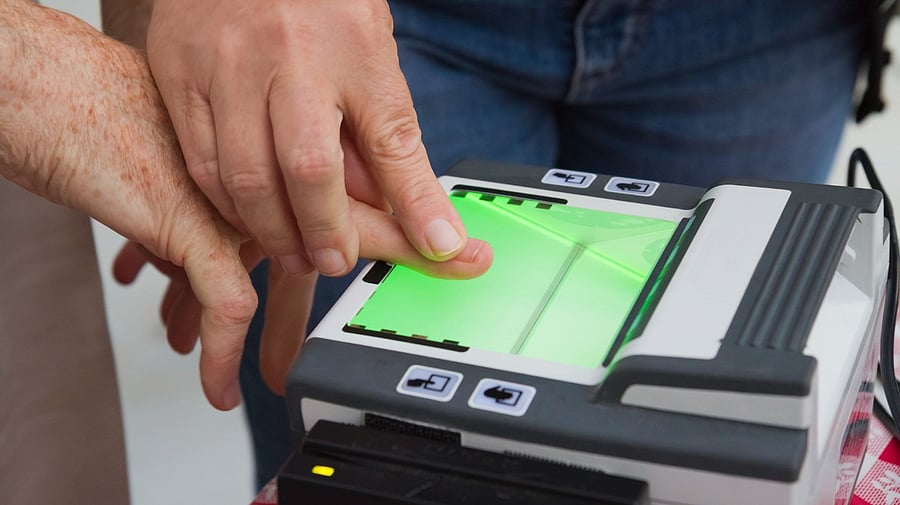
Image showing a fingerprint scanner. For representational purposes.
Credit: iStock
Karnataka’s push for digitisation in its Public Distribution System (PDS) through biometric identification has inadvertently excluded lakhs of people from the vulnerable sections, particularly senior citizens and manual labourers, from accessing their monthly rations, a lifeline for them. While the system aims to curb corruption and streamline ration distribution, its reliance on fingerprint scanning as the primary means for verifying eligibility has left many struggling to feed themselves and their families. For senior citizens, whose fingerprints are worn or distorted due to age or medical conditions, biometric authentication has become a significant barrier. Manual labourers, whose hands bear the marks of years of hard work in agriculture or construction, face similar challenges. In addition, even though the fingerprints of the elderly may be in good condition, there is a chance that they are immobile due to old age. The system does not consider their needs.
The removal of OTP-based verification has come as a hurdle, rather than an enabler, for people seeking to access their entitlements, particularly those unable to use fingerprints. The biometric system, though well-intentioned, fails to account for the realities of the most vulnerable. While it aims to eliminate middlemen and ensure transparency, it has instead become exclusionary. Technology meant to empower is instead marginalising those it aimed to help as a one-size-fits-all approach neglects the diverse needs of the population. The National Food Security Act (NFSA) provides a legal entitlement to subsidised foodgrains to the poor and vulnerable sections, while seeking to reform the PDS to ensure targeted delivery of essential nutrition. However, the current system fails to uphold this fundamental right, denying access to those who need it the most, defeating the very purpose of the Act.
Chief Minister Siddaramaiah has consistently articulated his vision for a hunger-free Karnataka. To translate this vision into reality, the government must acknowledge and rectify the inherent flaws in the existing system, adopting more adaptable solutions. It must incorporate multi-modal biometrics, combining fingerprint identification with other modalities like facial recognition or iris scanning. Additionally, it should develop alternative forms of authentication that accommodate diverse needs, abilities and circumstances. For technology to truly serve the larger public good, it must be universally accessible, inclusive and equitable, ensuring that all citizens can use it regardless of age, occupation or physical ability. The state must recognise that while the digital age offers immense potential, it should not come at the cost of basic rights of the citizens.
